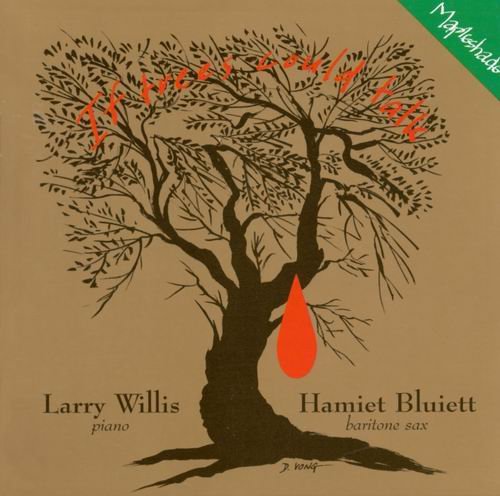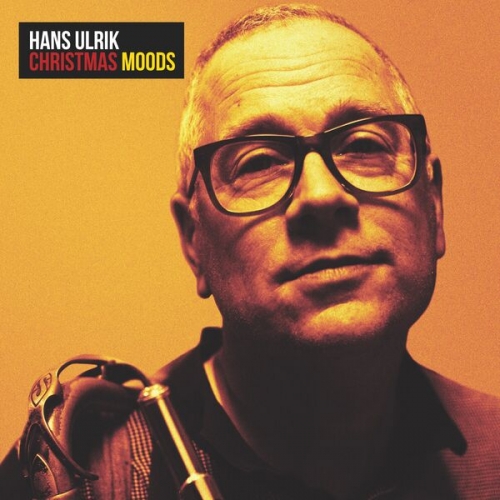Stefan Muhmenthaler, Anna Barbara Dütschler, Marc Pantillon - Ignaz Lachner: The Six Trios (1998)

Artist: Stefan Muhmenthaler, Anna Barbara Dütschler, Marc Pantillon
Title: Ignaz Lachner: The Six Trios
Year Of Release: 1998
Label: Claves
Genre: Classical
Quality: FLAC (image+.cue,log,scans)
Total Time: 02:25:19
Total Size: 708 Mb
WebSite: Album Preview
Tracklist: Title: Ignaz Lachner: The Six Trios
Year Of Release: 1998
Label: Claves
Genre: Classical
Quality: FLAC (image+.cue,log,scans)
Total Time: 02:25:19
Total Size: 708 Mb
WebSite: Album Preview
CD 1:
01. Anna Barbara Deutschler / Trio for violin, viola & p iano, in D minor, Op.89- Allegro giusto [0:07:57.35]
02. Anna Barbara Deutschler / Trio for violin, viola & p iano, in D minor, Op.89- Andantino, quasi allegretto [0:04:02.00]
03. Anna Barbara Deutschler / Trio for violin, viola & p iano, in D minor, Op.89- Scherzo. Allegro molto [0:03:13.00]
04. Anna Barbara Deutschler / Trio for violin, viola & p iano, in D minor, Op.89- Allegro molto [0:04:47.65]
05. Anna Barbara Deutschler / Trio for violin, viola & piano in B flat major, Op.37- Allegro moderato [0:08:08.10]
06. Anna Barbara Deutschler / Trio for violin, viola & piano in B flat major, Op.37- Andante con moto [0:07:16.74]
07. Anna Barbara Deutschler / Trio for violin, viola & piano in B flat major, Op.37- Scherzo. Allegro molto [0:04:51.00]
08. Anna Barbara Deutschler / Trio for violin, viola & piano in B flat major, Op.37- Finale. Allegro [0:07:57.66]
09. Anna Barbara Deutschler / Trio for violin, viola & piano, in E flat major, Op.102- Andante con moto - Allegro [0:05:50.45]
10. Anna Barbara Deutschler / Trio for violin, viola & piano, in E flat major, Op.102- Andante [0:03:47.39]
11. Anna Barbara Deutschler / Trio for violin, viola & piano, in E flat major, Op.102- Scherzo. Allegro assai [0:02:50.01]
12. Anna Barbara Deutschler / Trio for violin, viola & piano, in E flat major, Op.102- Allegro con spirito [0:05:18.52]
CD 2:
01. Anna Barbara Deutschler / Trio for violin, viola and piano, in G major, Op.58- Allegro con spirito [0:05:46.17]
02. Anna Barbara Deutschler / Trio for violin, viola and piano, in G major, Op.58- Andante [0:08:26.55]
03. Anna Barbara Deutschler / Trio for violin, viola and piano, in G major, Op.58- Scherzo. Allegro assai [0:07:16.00]
04. Anna Barbara Deutschler / Trio for violin, viola and piano, in G major, Op.58- Finale. Allegro assai [0:04:53.25]
05. Anna Barbara Deutschler / Trio for violin, viola & piano, in C major, Op.103- Andante grave - Allegro [0:07:02.13]
06. Anna Barbara Deutschler / Trio for violin, viola & piano, in C major, Op.103- Andantino [0:03:51.30]
07. Anna Barbara Deutschler / Trio for violin, viola & piano, in C major, Op.103- Tempo di Menuetto [0:02:59.07]
08. Anna Barbara Deutschler / Trio for violin, viola & piano, in C major, Op.103- Allegro [0:05:53.25]
09. Anna Barbara Deutschler / Trio for violin, viola & piano, in G major, Op.45- Allegro moderato [0:09:46.25]
10. Anna Barbara Deutschler / Trio for violin, viola & piano, in G major, Op.45- Andante [0:09:18.55]
11. Anna Barbara Deutschler / Trio for violin, viola & piano, in G major, Op.45- Allegretto [0:06:40.20]
12. Anna Barbara Deutschler / Trio for violin, viola & piano, in G major, Op.45- Finale. Allegretto [0:07:33.22]
Performers:
Stefan Muhmenthaler - violin
Anna Barbara Dütschler - viola
Marc Pantillon – piano
Ignaz’s is probably the least well-documented life of the Lachner brothers who numbered Franz and Vinzenz and who were born in Bavaria. Ignaz was a string player – violin and viola – and worked in Munich until Franz managed to secure him a job in Vienna in 1826. He composed and travelled widely, spending a period in Frankfurt between 1861 and 1875 where he conducted Wagner operas which he then cut to fit local taste. Though he achieved a degree of renown during his lifetime Lachner’s works have sunk almost without trace and I doubt whether many, if any, are now in print. We do know that the Op. 37 Trio was published in 1851, when the composer was living in Munich, but it’s debatable when it was actually written. The other trios are, in many cases, undated though it’s clear that this was a medium he liked and returned to throughout his compositional life. The C major for instance is his Op.103.
It was unusual, then and now, to write for the violin-viola-piano trio though there was certainly precedent. Graun’s works for the medium would doubtless have been known to Lachner; maybe Mendelssohn’s, given the geographical and stylistic proximities between the two. Less well known examples such as those by Lindblad also present themselves as models – and as an executant musician, as well as composing conductor, Lachner would certainly have been well placed to hear (and indeed play) them.
But whatever the source of inspiration the fact remains that these six works, though frequently formulaic and straightforward, are pleasing examples of chamber music and naturally and idiomatically written for the combination. The D minor has plenty of busy figuration for the piano and is strongly tied to classical procedure. His Andantino is witty and light hearted with a more strenuously pomposo contrastive section and he enjoys a Schubertian Scherzo, well written and not at all profound. His finale, as he demonstrates elsewhere, mines folk elements – here Hungarian with a Mozartian model very strongly to the fore. We can establish straightaway the essential elements of a Lachner trio – Schubertian lyricism, Mozartian classicism, excellent instrumental balance but an avoidance of contrapuntal development. There are no fugatos here.
The B flat major’s fluent opening movement impresses even more when it journeys into the minor though the material can be unvaried. But at heart Lachner is a lyricist of some candour though he makes no aspirations to any great emotive plangency. Here his slow movement has pliancy but no romanticised expressive quotient. Clearly the Scherzo has partaken of some mid period Beethoven and there’s Schubert to give a sense of flow and elasticity to his finale. These influences are inescapable in his work though none the more overbearing for it. We could equally cite the finale of the E flat major – his Op.102 – as having inherited a strong slice of Mendelssohnian brio – it’s certainly reminiscent of the Opp.49 and 66 trios. Th players make the most of their emotive moments in the Andante of the earlier Op.58 trio, in D major, and give rein to the flowing lyric trio of the Scherzo. Another influence is Schumann who seems to haunt the opening Andante section of the Op.103 a work in which Lachner unveils an echt Mozartian Minuet just to confuse matters stylistically. And caps it all with a Schubertian finale. Lest one think; where is Lachner in all this, one can listen to the initially ghostly start of the first movement of the G major and admire the workmanship and craft as it gathers strength (yes, there’s still a dainty Mozartian Andante to follow). Throughout, whilst his eye was on the Romantics his impulse was towards the Classical style. If that means bald conjunctions, seemingly incompatible manners, well I would go along with that. But there’s something attractive about Lachner’s music that defies easy dismissal. It has grazioso elegance and it has charm. I rather like it. I think the Muhmenthaler-Dütschler-Pantillon like it as well. They play with discretion and some warmth – but never inflate material beyond its natural constraint. There’s just a touch too much resonance in the recording but it’s not harmful. The notes relate Lachner’s middling career in so far as we can now trace it. No, no masterpieces, but enjoyable music making and a cool sidelight into German chamber music of the time. -- Jonathan Woolf
It was unusual, then and now, to write for the violin-viola-piano trio though there was certainly precedent. Graun’s works for the medium would doubtless have been known to Lachner; maybe Mendelssohn’s, given the geographical and stylistic proximities between the two. Less well known examples such as those by Lindblad also present themselves as models – and as an executant musician, as well as composing conductor, Lachner would certainly have been well placed to hear (and indeed play) them.
But whatever the source of inspiration the fact remains that these six works, though frequently formulaic and straightforward, are pleasing examples of chamber music and naturally and idiomatically written for the combination. The D minor has plenty of busy figuration for the piano and is strongly tied to classical procedure. His Andantino is witty and light hearted with a more strenuously pomposo contrastive section and he enjoys a Schubertian Scherzo, well written and not at all profound. His finale, as he demonstrates elsewhere, mines folk elements – here Hungarian with a Mozartian model very strongly to the fore. We can establish straightaway the essential elements of a Lachner trio – Schubertian lyricism, Mozartian classicism, excellent instrumental balance but an avoidance of contrapuntal development. There are no fugatos here.
The B flat major’s fluent opening movement impresses even more when it journeys into the minor though the material can be unvaried. But at heart Lachner is a lyricist of some candour though he makes no aspirations to any great emotive plangency. Here his slow movement has pliancy but no romanticised expressive quotient. Clearly the Scherzo has partaken of some mid period Beethoven and there’s Schubert to give a sense of flow and elasticity to his finale. These influences are inescapable in his work though none the more overbearing for it. We could equally cite the finale of the E flat major – his Op.102 – as having inherited a strong slice of Mendelssohnian brio – it’s certainly reminiscent of the Opp.49 and 66 trios. Th players make the most of their emotive moments in the Andante of the earlier Op.58 trio, in D major, and give rein to the flowing lyric trio of the Scherzo. Another influence is Schumann who seems to haunt the opening Andante section of the Op.103 a work in which Lachner unveils an echt Mozartian Minuet just to confuse matters stylistically. And caps it all with a Schubertian finale. Lest one think; where is Lachner in all this, one can listen to the initially ghostly start of the first movement of the G major and admire the workmanship and craft as it gathers strength (yes, there’s still a dainty Mozartian Andante to follow). Throughout, whilst his eye was on the Romantics his impulse was towards the Classical style. If that means bald conjunctions, seemingly incompatible manners, well I would go along with that. But there’s something attractive about Lachner’s music that defies easy dismissal. It has grazioso elegance and it has charm. I rather like it. I think the Muhmenthaler-Dütschler-Pantillon like it as well. They play with discretion and some warmth – but never inflate material beyond its natural constraint. There’s just a touch too much resonance in the recording but it’s not harmful. The notes relate Lachner’s middling career in so far as we can now trace it. No, no masterpieces, but enjoyable music making and a cool sidelight into German chamber music of the time. -- Jonathan Woolf








